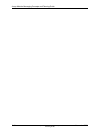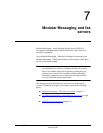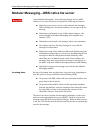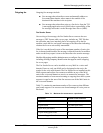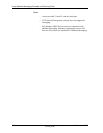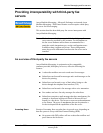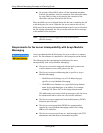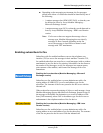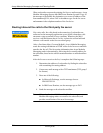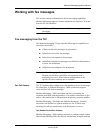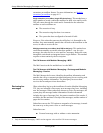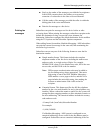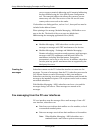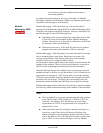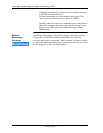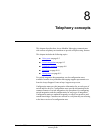
Avaya Modular Messaging Concepts and Planning Guide
7-8 November 2004
Avaya Modular Messaging Concepts and
Planning Guide
When a subscriber requests the printing of a fax or e-mail message, Avaya
Modular Messaging requests that IBM Lotus Domino forward a copy of
the message to the default fax destination or to a one-off address of the
form nnnnnnn@FAX, where FAX is the address type for the fax server
and nnnnnnn is the telephone number of the fax device.
Routing inbound fax calls to the third-party fax server
Like voice calls, fax calls placed to the extension of a subscriber are
redirected to the messaging application server (MAS) when these calls
encounter a ring-no-answer or busy condition. Whenever the MAS
receives a call and detects that it is a fax, it places the call on hold and
initiates a call transfer to the fax server hunt group.
After a fixed time delay (5-second default), Avaya Modular Messaging
sends fax routing information as DTMF codes to the fax server and then
transfers the fax call. The fax routing information that Avaya Modular
Messaging sends is determined by retrieving the fax routing address for
the subscriber, based on the called extension number or entered mailbox
number.
After the fax server receives the fax, it completes the following steps:
1. Determines the address of a subscriber by finding the subscriber
with a matching fax routing address
2. Creates an e-mail message with a TIFF attachment (TIFF group 3
fax format)
3. Does one of the following:
! In Microsoft Exchange, sets the message class to
IPM.NOTE.FAX
! In IBM Lotus Domino, sets the message type to FAX
4. Sends the message to the subscriber mailbox
Note: If the subscriber has Call Me enabled for fax messages,
Modular Messaging makes an outcall to the subscriber, and
provides a notification of the new fax message.



